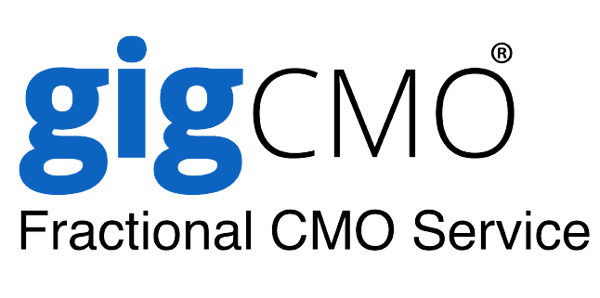
Funding programmes play an important role in facilitating Indigenous investment initiatives across Canada, particularly in infrastructure projects vital for community development. These programmes provide essential financial resources for the inception, upkeep, and enhancement of critical public works like transportation networks, energy systems, water and sanitation facilities, and public buildings. Given the significant upfront costs associated with such projects, access to diverse financing options is paramount.
Access to various funding avenues, including loans, grants, and equity investments, enables Indigenous communities to undertake infrastructure projects in a timely manner, addressing immediate societal needs and bolstering economic growth. Moreover, these financing mechanisms foster collaboration between Indigenous groups, governments, and private entities, encouraging innovation, efficiency, and sustainability in infrastructure development.
In essence, the availability of robust funding programmes is instrumental in empowering Indigenous communities to build and maintain essential infrastructure, fostering thriving communities, resilient economies, and a sustainable future for generations to come.
Federal Initiatives
Canada Infrastructure Bank Indigenous Equity Initiative
In November 2023, the Canada Infrastructure Bank (CIB) unveiled its Indigenous Equity Initiative, a groundbreaking programme designed to facilitate Indigenous communities' acquisition of equity stakes in infrastructure projects. Unlike traditional loan guarantee programmes, the Indigenous Equity Initiative offers direct loans to Indigenous proponents seeking to invest in projects where the CIB is also a stakeholder. With a mandate spanning clean power, green infrastructure, public transit, broadband, and trade and transportation, the initiative represents a holistic approach to Indigenous participation in Canada's infrastructure sector.
Hillary Thatcher, Managing Director of Investments at the CIB, has been involved in the development and implementation of this initiative. As a prominent leader within the CIB, Thatcher brings her expertise in structuring investments that align with the organisation's strategic focus on priority sectors. Her participation as one of the speakers at the Canadian Indigenous Investment Summit further emphasises the CIB's commitment to building partnerships and driving sustainable infrastructure development in Indigenous communities.
Key qualifying criteria for accessing loans under the Indigenous Equity Initiative include:
1. CIB investment in the project.2. Project location on Indigenous traditional territory.
3. Investment through community-owned economic development entities.
4. Demonstration of a financing gap for Indigenous equity stake purchase.
The programme provides financing ranging from $5 million to $100 million, covering up to 90% of the Indigenous equity interest. Loans are available from financial close to substantial completion or commercial operation date, offering flexibility to project proponents. Notably, the Indigenous Equity Initiative differs from the previous Indigenous Community Infrastructure Initiative by removing the requirement for a minimum percentage threshold investment, thereby broadening access for Indigenous communities
Initiated Projects
An example of the Indigenous Equity Initiative is the Nova Scotia Energy Storage Project, announced in February 2024. This transformative project, jointly owned by Nova Scotia Power Inc. and a limited partnership comprising 13 Mi’kmaw communities, highlights the potential for Indigenous participation in clean energy ventures. As the flagship project under the Indigenous Equity Initiative, it sets a precedent for future collaborations between Indigenous communities and infrastructure developers.
Federal National Benefits Sharing Framework
Complementing the CIB's efforts, the Federal National Benefits Sharing Framework aims to advance opportunities for Indigenous communities to participate as partners in major infrastructure projects. Although details of the Framework are forthcoming, the federal government's commitment to Indigenous inclusion is evident through funding allocated for Natural Resources Canada (NRCAN) consultations and the development of a National Indigenous Loan Guarantee Programme.
The NRCAN 2024-2025 Departmental Plan reaffirms the government's commitment to collaborating with federal and Indigenous partners to establish a robust loan guarantee programme. While specifics are yet to be announced, the Federal National Benefits Sharing Framework holds promise for enhancing Indigenous access to infrastructure development opportunities across Canada.
Provincial Programmes
Alberta Indigenous Opportunities Corporation (AIOC)
Established in 2019, the Alberta Indigenous Opportunities Corporation (AIOC) has been at the forefront of facilitating Indigenous involvement in infrastructure projects. Central to its mission is the provision of loan guarantees, ranging from $20 million to $250 million, to reduce the risk for lenders investing in Indigenous-led initiatives. Eligible projects span various industries, including energy, mining, forestry, agriculture, telecommunications, and transportation. Noteworthy examples include the Athabasca Trunkline and the Cascade Power Plant, where Indigenous communities have secured significant equity interests with the support of AIOC loan guarantees.


Saskatchewan Indigenous Investment Finance Corporation (SIIFC)
In Saskatchewan, the Indigenous Investment Finance Corporation (SIIFC) was launched in June 2022 to bolster Indigenous equity participation in natural resource and value-added agriculture projects. Through loan guarantees of $5 million to $75 million, SIIFC aims to support Indigenous communities in accessing financing for ventures aligned with economic development priorities. While specific projects supported by SIIFC are yet to be announced, the programme underscores Saskatchewan's commitment to fostering Indigenous-led initiatives that drive economic growth and prosperity.
Ontario Aboriginal Loan Guarantee Programme (ALGP)
Since its inception in 2009, the Ontario Aboriginal Loan Guarantee Programme (ALGP) has been instrumental in facilitating Indigenous equity participation in electricity infrastructure projects. With up to $1 billion in loan guarantees available, the ALGP supports Indigenous-owned entities in financing 75% of eligible equity investment in projects across Ontario. Projects like the Wataynikaneyap Power Grid Connection Project and the Rainy River Solar initiative exemplify the programme's impact, empowering Indigenous communities to take ownership of sustainable energy solutions.


British Columbia First Nation Equity Financing Program
In British Columbia, the government's Budget 2024 heralded the establishment of the First Nation Equity Financing Programme, signalling a renewed commitment to Indigenous equity in infrastructure. With a cumulative loan guarantee limit of $1 billion, the programme aims to expedite equity loans for First Nations actively participating in priority projects. Moreover, the collaboration between the Canada Infrastructure Bank and BC Hydro further underscores the province's dedication to supporting Indigenous-led initiatives in the energy sector.
Indigenous-Specific Funding
First Nation Infrastructure Fund (FNIF)
The First Nation Infrastructure Fund serves as a vital source of funding to address long-standing infrastructure needs in Indigenous communities. With a focus on nine categories of eligible projects, including solid waste management, roads and bridges, and cultural and recreational facilities, the FNIF targets areas essential for community development and sustainability. Importantly, the FNIF extends its support beyond on-reserve projects, considering off-reserve initiatives that involve cost-sharing with non-Indigenous partners.
To access FNIF funding, First Nations communities develop and submit their Infrastructure Investment Plans to ISC, which evaluates and selects projects based on established criteria. This inclusive approach ensures that Indigenous communities actively participate in decision-making processes concerning their infrastructure development.
Health Facilities Programme
The Health Facilities Programme plays a critical role in improving healthcare access and delivery for First Nations, Inuit, and Indigenous communities. Through funding support for planning, construction, expansion, renovation, and maintenance of health facilities, the programme addresses the diverse healthcare needs of Indigenous populations.
This encompasses a wide range of infrastructure, including health services buildings, addiction treatment centres, and residences for healthcare professionals. By empowering communities to assume greater control over health facilities planning, the programme fosters self-determination and enhances the quality and effectiveness of healthcare services. Moreover, the programme's focus on operations and maintenance, as well as minor and major capital projects, ensures the sustainability and resilience of health infrastructure in Indigenous communities.
Application Process and Eligibility
Both the FNIF and the Health Facilities Programme are accessible to First Nations and Inuit communities across Canada, as well as related organisations involved in health service delivery. While there are no specific deadlines for applications, regional offices collaborate with communities to identify needs and prioritise projects based on factors such as demonstrated need and potential impact. The application process involves contacting regional offices to initiate project planning documentation and engage in the assessment and prioritisation process.
Canada offers a wide range of financing options for infrastructure projects, spanning federal and provincial initiatives. From the Canada Infrastructure Bank's Indigenous Equity Initiative to programmes like the Alberta Indigenous Opportunities Corporation and Saskatchewan Indigenous Investment Finance Corporation, there are diverse avenues for Indigenous communities to access funding.
Additionally, initiatives such as the First Nation Infrastructure Fund and Health Facilities Programme demonstrate the government's commitment to addressing infrastructure and healthcare needs. This diversity of options reflects collaborative efforts to empower Indigenous communities and foster sustainable development nationwide.
Canadian Indigenous Investment Summit
Register Now for Unique Business Opportunities, Cultural Engagement, and Elite Networking!
8:00 am - 3:00 pm, Tuesday, 7th May 2024, Mansion House, City of London

These financing options ensure Indigenous communities have the necessary resources to invest in their projects. The Canada Indigenous Investment Summit will serve as your gateway to understanding the intricacies of investing in Canada. Join us to ensure you do not miss the opportunity to make informed investment decisions and contribute to the growth and success of Indigenous communities. Register now.
